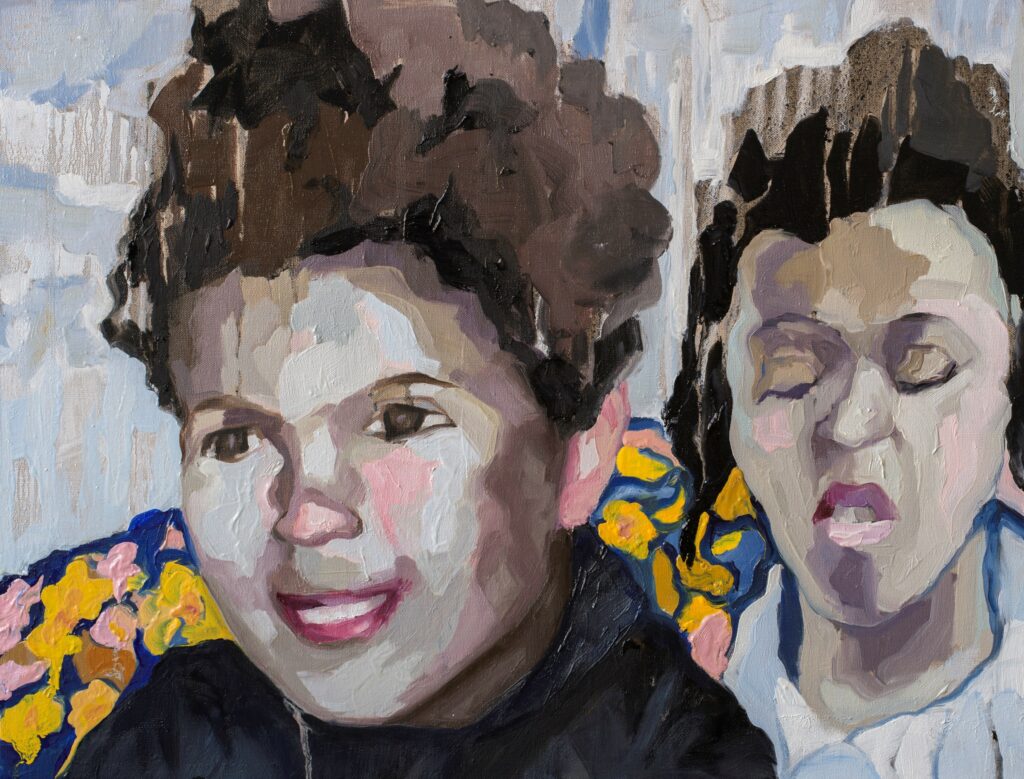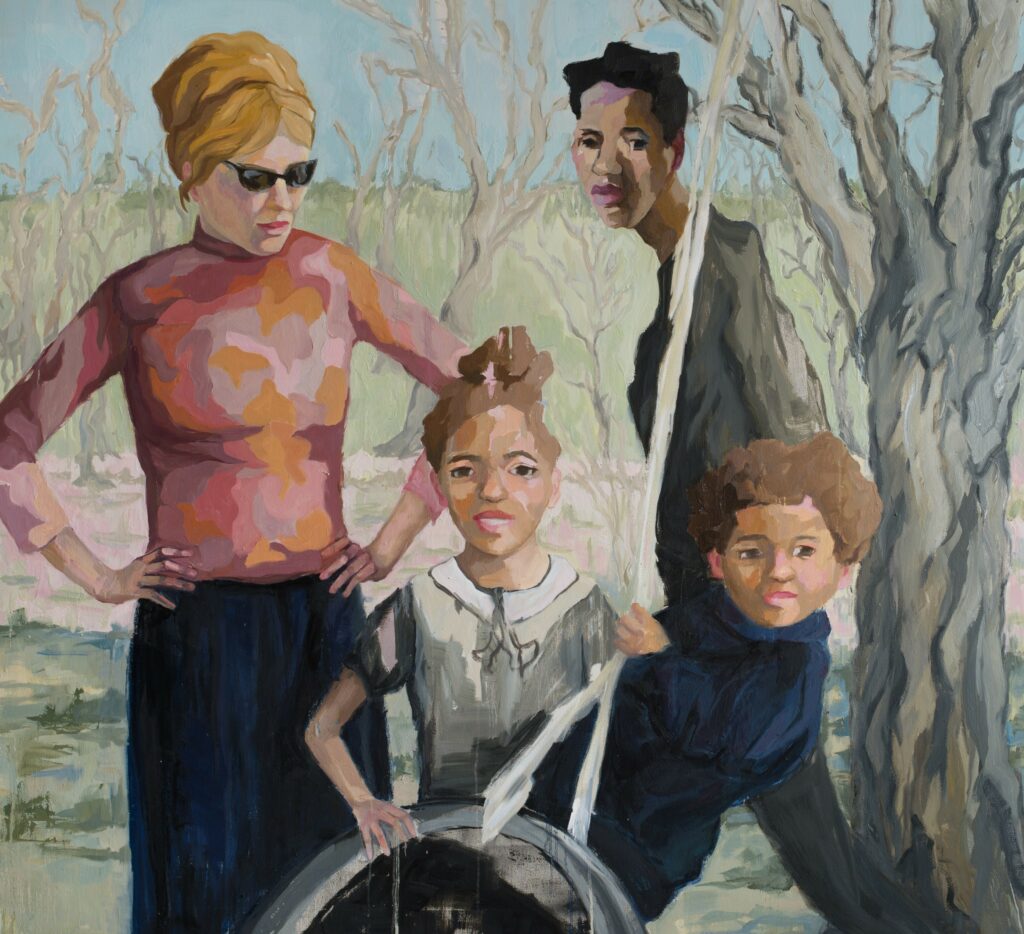20 th August , 2019

Ruth Owens was born to a young German woman and a Black American serviceman from Georgia in 1959. The nomadic military lifestyle of her childhood was complicated by restrictions to mixed families and contributed to the formation of her cultural identity. After 25 years as a plastic surgeon, Ruth Owens followed her creative calling and focused on a new career in visual art. She graduated in 2018 with an MFA from the University of New Orleans. She is presently represented by Jonathan Ferrara Gallery of New Orleans and belongs to the artist collectives: A.I.R. Gallery in Brooklyn, NY and “The Front” in New Orleans. She completed residencies at the Addison Gallery of American Art in Andover, MA in February 2019 and at the Vermont Studio Center in Johnson, VT in 2018.

ArtX: Tell us about you as a person.
Ruth Owens: I’m Ruth Owens and I’ve lived in New Orleans for 26 years now. I’m happy to have settled here after my childhood’s nomadic existence in a military family. We moved eleven times by the time I graduated from high school, primarily within what was then West-Germany. We preferred that country because my German mother longed for her home in Bavaria where she and I were born. My father is African American from Houston, and after a rift with his mother was happy to adapt to living in Germany, and they still live there now.
How long have you been practicing art professionally, when did you consider yourself a real artist? Did you go to art school? Tell us about your training, formal and informal.
After 25 years of practicing medicine as a plastic surgeon, I altered my focus to concentrate on my artistic practice. That was five years ago. I discontinued performing surgical procedures and I attended art school, completing a MFA last year. Informally, my training began years before graduate school. I studied art in college, and I regularly attended a local fine arts academy where I learned a very classical and academic approach to drawing and painting. I sought out a graduate school that was challenging in terms of the content and context of my work. It was at the University of New Orleans that I learned to be critical and thoughtful about my subject matter, and I started my journey exploring matters that were most important to me such as familial relationships in a culture of racial divide.
What medium do you prefer to work in?
I am a painter, and I also work in video. When painting, I prefer to use oil paint because of its malleability and its organic nature. The paint is glopped, smeared, scraped, gently applied, dripped, expressively swooshed, painstakingly picked at, etc. Since I am painting bodies, oils give me the opportunity to investigate the corporality and feel of the figure. I think of the paint as a metaphor for the human body, and it allows me to investigate both the fullness and the vulnerability of black and brown bodies. My videos also tend toward an expressive mode of presentation, especially with the distortion and corruption that accompanies my work with super 8 cameras.

Who are some of your art inspirations? What are some of your non-art inspirations?
There are some artists that I admire for their process and ability to beautifully address domestic concerns while still making a significant cultural statement like Njedika Akunyili Crosby. Other artists, I follow for their fearlessness and sheer dedication to the process of painting like Adrian Ghenie from Romania.
When do you know when a work is finished?
I am very regimented in my practice with a habitual plan that I usually follow. I start with a photographic collage, then proceed to a small watercolor on paper. At that point, I decide if the piece is strong enough to warrant creating a large-scale oil painting. If so, most of my work has already been mapped out in terms of composition, drawing, and color decisions. When I get to a point close to finishing the oil painting, I stop and turn the work to the wall for a few weeks, if time allows. Looking at the painting with fresh eyes at a later time gives me some time to gain some emotional distance and to coolly make finishing touches if needed.
Tell us about your process when working. Do you listen to music or do any rituals to get yourself ready to make art?
I play classical music which functions as benign background sound, to combat the hours spent alone in the studio. Essential oils or incense adds to the sensual and calming atmosphere.

What are the meanings and the concepts behind this particular body of work?
This body of work is of a very personal nature exploring memories of childhood and family relationships. Familial super 8 films from the 1960’s serve as the reference material for the paintings which depict the interactions of my mixed-race family. Although I attempt to create a significant degree of visual engagement, this work is inherently political with regards to racial concerns.
What do you wish viewers would take away from your work?
I hope that viewers are able to openly enter this work and feel something. It is my hope that I allow enough openness to gain some feeling of identification on the part of the viewer.

What are your biggest goals as a visual artist? And what has been your proudest moment professionally?
My goals are to keep growing as an artist. I have specific visions in mind about creating grand-scale work that includes a sense of place as well as the subjects that inhabit the space. This will create a more complete and complex picture of familial and domestic life. I plan to continue to use film stills as reference materials, in order to have the desired cinematic effect. There is freedom of movement in the work. This way the subjects are given agency in that they are not posed by the artist in power but are busy performing activities important in their lives.
Visit Ruth’s website to experience more art and upcoming projects.
Follow Ruth Owen’s Instagram at @ruthowensart